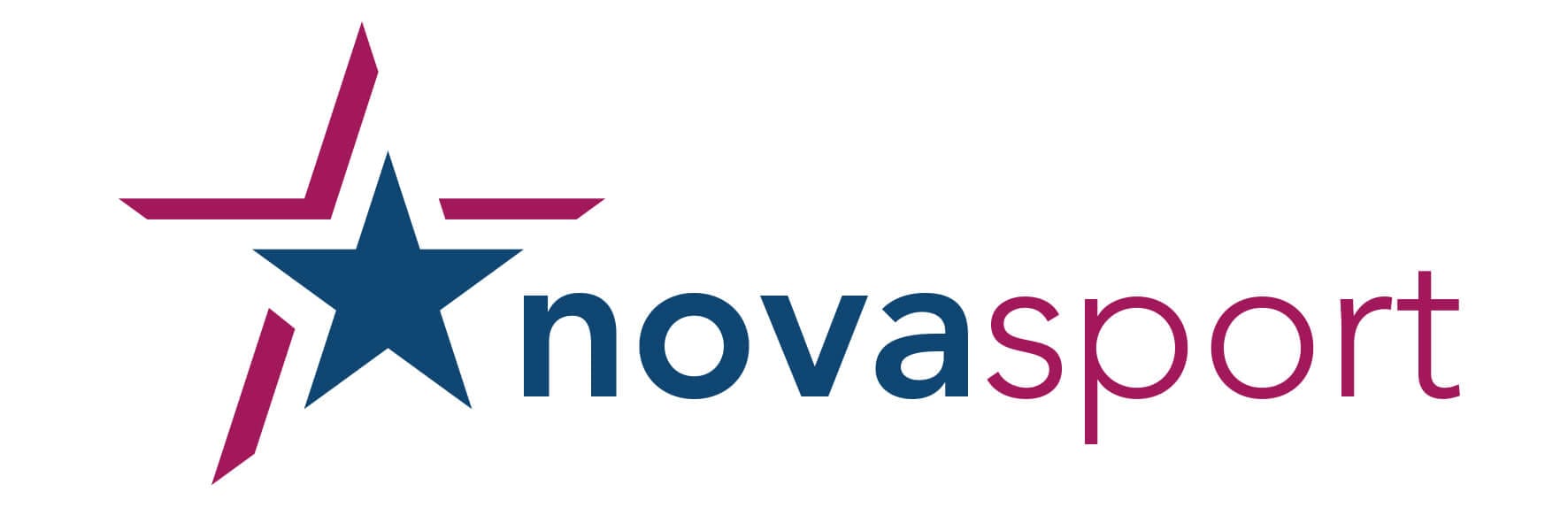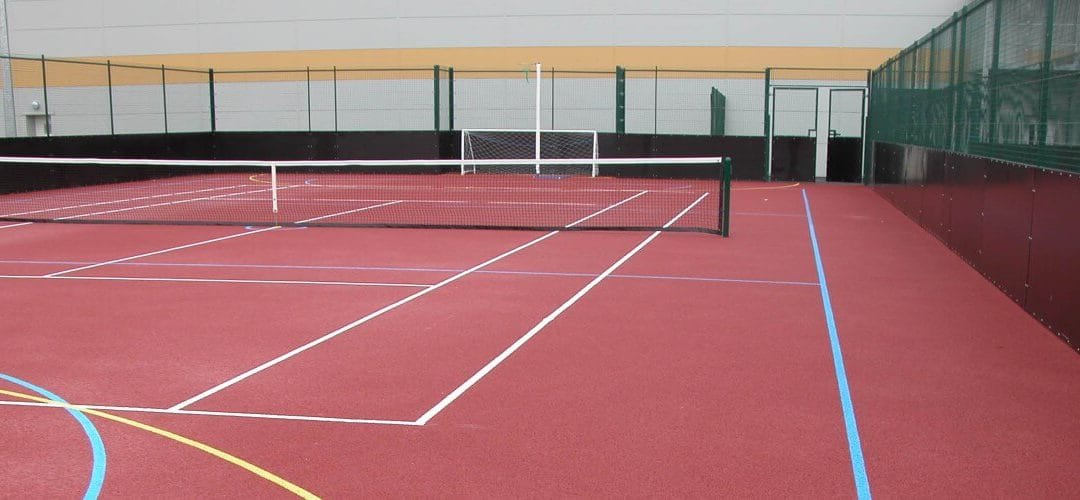Multi-Use Games Areas, often referred to as MUGAs, are one of the most efficient ways to make the most of available space in schools, community parks, sports centres and recreational grounds. Designed for multiple types of sport and physical activity, these versatile facilities rely on one key element to deliver performance, safety and functionality: the surfacing.
MUGA surfacing is not a one-size-fits-all solution. The type of surface you choose directly impacts how well the area supports different sports, how long it lasts, and how inclusive and safe it is for users of all ages and abilities.
MUGA surfacing supports multi-sport use by providing safe, durable, and versatile foundations for activities like football, netball, basketball, and tennis. With tailored surface types, slip resistance, and custom line markings, it maximises space, enables year-round use, and suits users of all ages, making it ideal for schools, parks, and sports centres.
In this blog, we will explore how MUGA surfacing supports multi-sport use, the benefits it brings to your facility or site, and what to consider when planning or upgrading a MUGA to cater to a variety of activities.
Understanding Multi-Sport MUGAs
Before we dive into surfacing types, it is important to understand what we mean by a multi-sport MUGA.
A multi-sport MUGA is an outdoor games area that is purposely designed to host a range of sports and recreational activities within a single space. A well-planned MUGA may include features such as:
- Ball courts with marked zones for different games
- Goals, hoops and rebound fencing
- Surfacing tailored to performance and safety
- Custom line markings for different sports
These spaces are popular with schools, local authorities, housing developers and leisure providers because they offer year-round usability, inclusive design, and excellent value for money. However, the success of a multi-sport MUGA depends heavily on the type of surfacing used.
Why Surfacing Matters in a Multi-Sport Setting
The surface of a MUGA is more than just a base for play. It directly affects:
- Which sports can be played
- The comfort and safety of users
- The visual appearance and durability of the facility
- Ongoing maintenance requirements
- Accessibility and inclusivity
Each sport has different requirements. For example, football and rugby need a surface that allows for grip and slide. Netball, on the other hand, demands high levels of traction and impact resistance. Basketball players benefit from a surface with a reliable bounce, while tennis requires an even finish and good ball speed.
The challenge is to find a surfacing system that can meet these varying demands within the same area. Fortunately, there are several solutions designed to do exactly that.
Types of MUGA Surfacing for Multi-Sport Use
Here is a breakdown of the most common MUGA surfacing types and how they support multiple sports:
- Polymeric Surfacing (Type 3 and Type 4)
Polymeric surfacing is made from rubber granules bound together to form a flexible and durable surface. It is suitable for a wide range of ball sports and is popular for schools and council-led projects.
- Type 3 polymeric surfacing has a textured finish and is ideal for sports like netball, basketball, and tennis. It offers high slip resistance, cushioning and all-weather performance.
- Type 4 polymeric surfacing has a smoother finish and is commonly used for sports requiring consistent bounce and roll, such as tennis and recreational football.
Polymeric surfaces can be colour-coated and line-marked to support multiple sports on the same surface, using contrasting colours for clarity.
- 3G Artificial Sports Grass
Third-generation artificial turf, or 3G, is designed to mimic natural grass but with improved resilience and drainage. It includes a longer pile height and infill materials like rubber crumb.
3G surfacing is best suited to football and rugby, making it ideal for MUGAs where these sports are the primary focus. It provides shock absorption, comfort underfoot, and consistent ball roll.
For MUGAs where football is the most played sport, but other activities like training drills or informal games take place, 3G turf is an excellent choice.
- Sand-Dressed or Needlepunch Synthetic Turf
These surfacing systems are suitable for multiple lower-impact sports, such as hockey, tennis, and general school activities. They are often used in primary school MUGAs or for spaces aimed at younger children.
Needlepunch turf is durable, slip-resistant, and offers a softer landing. Sand-dressed options help maintain even performance and ball behaviour.
These surfaces are often chosen when the emphasis is on variety, especially where different age groups and physical activities are involved.
- Macadam (Tarmac) Surfacing
Macadam or asphalt surfacing is a traditional hard court option for MUGAs. It is commonly used in schools and public parks.
It provides a firm and flat surface that is suitable for tennis, basketball, netball and general ball play. Although it is not as forgiving as rubber or turf systems, it offers affordability and easy maintenance.
Macadam surfaces are usually colour-coated and marked with durable lines for different sports. They are also compatible with fencing systems and goal units.
Multi-Sport Use Made Possible by Line Markings
No matter which surface you choose, multi-sport use depends on effective line marking. This is where design and planning come into play.
Modern MUGAs can include line markings for up to five different sports on a single surface. These are typically painted in contrasting colours to help players distinguish between courts.
For example:
- White lines for football
- Red lines for basketball
- Yellow lines for tennis
- Blue lines for netball
Line markings are applied using anti-slip sports paint to ensure visibility and safety in all conditions. At Nova Sport, we work with clients to ensure markings are tailored to their activity priorities, user groups and spatial constraints.
The Benefits of MUGA Surfacing for Multi-Sport Use
There are many reasons to invest in high-quality surfacing when developing or upgrading a multi-sport MUGA. Here are some of the key advantages:
Space Efficiency
One of the most obvious benefits is how much sport you can accommodate within a single footprint. Instead of installing several single-purpose courts, one MUGA can cater to multiple groups and uses, helping to maximise land use.
Budget-Friendly Long-Term Solution
Multi-sport MUGAs reduce the need for multiple facilities and save on long-term costs such as surfacing repairs, fencing, and maintenance. Surfacing materials such as polymeric and 3G turf offer excellent lifecycle value.
Year-Round Use
MUGA surfacing is designed to be weather-resistant. With good drainage and slip resistance, these spaces can be used in all seasons, increasing their value to the community or institution.
Versatile for All Age Groups and Abilities
Whether you are supporting early years physical development or adult team sports, the right surface makes it easier for everyone to take part. Many surfacing options provide cushioning and support to help reduce injuries.
Encourages Broader Participation
With multiple sports available, MUGAs appeal to a wider group of people. Schools can deliver a more varied PE curriculum, while councils can support active lifestyles for all.
Customising Your MUGA for Maximum Flexibility
At Nova Sport, we recognise that no two sites are the same. That is why we offer fully tailored MUGA surfacing solutions.
This includes:
- Helping you choose the right surfacing based on intended use
- Creating a line marking layout to support multiple sports
- Integrating rebound fencing, goals, and hoops
- Advising on surfacing types suitable for local climate and footfall
- Offering maintenance advice for longevity
Our expert team works with schools, councils, and sports clubs across the UK to deliver installations that support multi-sport activity, meet safety standards, and stand the test of time.
Planning Your Multi-Sport MUGA: What to Consider
When preparing for a new MUGA or refurbishing an existing one, ask yourself the following:
- Which sports need to be supported?
Make a list of all activities you want to cater for and prioritise them. - Who will be using the facility?
Consider the age, ability, and number of users. A school might have different needs than a public park. - What is the available budget?
This can influence your choice of surfacing, accessories, and additional features. - Do you need line markings for specific sports?
Tailored markings improve usability and can be updated as needs change. - Is accessibility a priority?
Some surfacing types are better suited for inclusive access and wheelchair use. - What maintenance will be required?
Choosing low-maintenance surfacing helps reduce future costs and disruption.
MUGA surfacing is not simply about laying a base and painting a few lines. It is the foundation that enables a facility to succeed across multiple uses, age groups, and seasons.
Whether you are developing a sports area for a school, a community group, or a local authority, choosing the right MUGA surfacing ensures maximum flexibility, safety and value for everyone involved.
Ready to Create a Multi-Sport Space That Lasts?
At Nova Sport, we specialise in high-performance MUGA surfacing tailored to your needs. Whether you’re planning a new installation or upgrading an existing facility, our expert team can help you choose the right surface for safe, multi-sport use all year round.
Contact us today to arrange a free consultation or request a quote. Let’s turn your outdoor space into a durable, inclusive and versatile games area.
Frequently Asked Questions
What is the most versatile type of MUGA surfacing?
Polymeric surfacing (Type 3) is often the most versatile option, suitable for a wide range of court sports including netball, basketball and tennis.
Can I use 3G surfacing for more than football?
Yes, it is suitable for rugby and general training, but not ideal for tennis or sports requiring bounce consistency.
How long does MUGA surfacing last?
With proper care, most surfaces last between 10 and 15 years, depending on use and maintenance.
Do I need planning permission for a MUGA?
In many cases, yes. It is advisable to check with your local authority, especially if floodlights or fencing are included.
Can line markings be updated later?
Yes. Line markings can be repainted or changed as needs evolve. This flexibility is one of the key benefits of modern MUGA design.

